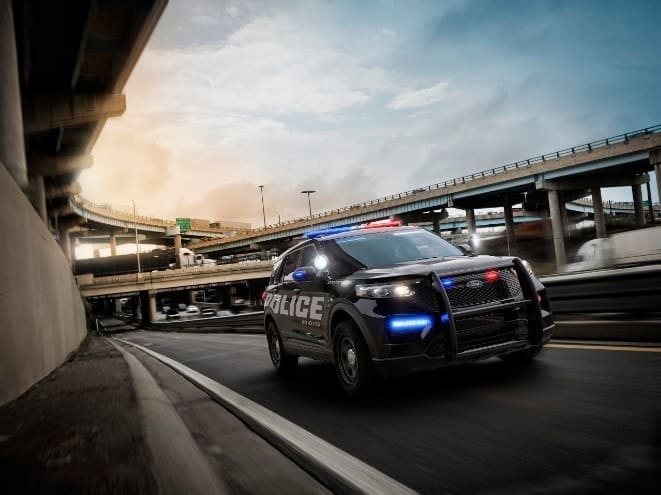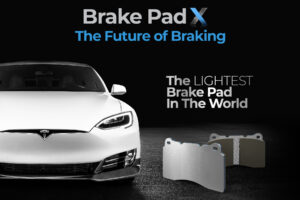DEARBORN, Mich. – Ford added a hybrid powertrain to its Explorer SUV law-enforcement interceptor, the most popular police vehicle sold in the United States, which brought other system changes. Like most electrified vehicles, whether hybrid (HEV), plug-in hybrid (PHEV) or battery electric vehicle (BEV) – the Ford Explorer interceptor hybrid has regenerative braking which both reduces wear and tear on the conventional friction-braking system, as well as recharging the battery.
The entire braking system, like much of the vehicle, is engineered specifically for its police-interceptor responsibilities, with the friction system more robust than the standard consumer version.
The rotors in the interceptor are 365x32mm (14.4×1.26 inches) in the front, 350x26mm (13.8×1 inches) in the rear, with all four being vented. The system on the Explorer XLT (base brakes) are 350x32mm (13.6×1.26 inches) up front, 320x12mm (12.6×1 inches) in the rear with the fronts vented, rear solid. In addition, the police vehicle’s pads are more robust than those of the consumer model.
The brake booster has an electronic motor creating the pressure for the friction system which uses conventional hydraulics to operate the brakes.
The entire system is also calibrated differently than the one in the consumer product, according to Allen Magolan, Ford’s Police, Sport, Core Attributes Vehicle Engineering Supervisor.
Regen or friction braking, everything starts with letting off pressure on the accelerator pedal. As is the norm in an EV of any kind, this action will begin regenerative braking (turning the electric motor into a generator, with the braking energy being returned to the battery), thus slowing the vehicle.
If more braking is necessary than simply easing off the accelerator, pressure on the brake pedal will continue regenerative braking or a combination of regenerative and friction braking.
“The brake pedal is a modulator for how much regen we create,” explained Magolan. “Go lightly on the pedal, and the brakes react that way, but if you’re heavy there’s much more of each (friction and regenerative).”
The decision as to how much of each braking system is provided by computers within the vehicle.
“It’s called ‘arbitration,’” explained Magolan. “The computer is managing what the driver is asking for, and what the capabilities of the different systems are. And at the highest limits, when you really need a lot of braking performance, what it “says” is ‘all right, we’re going to use friction braking.’”
Beyond the different braking-system specifics, the police-interceptor Explorer’s advanced driver-assistance systems (ADAS) are different from the consumer version.
Magolan explained that an officer needs more direct command of his/her vehicle, having to be able to react to a situation in a way which might not be “normal” for a consumer vehicle, like having to strike another vehicle while in the course of a police action.
“We do offer automatic emergency braking (AEB) in the police vehicle,” he said. “But there is a disable switch under the dash for it so the driver can adapt to a specific situation when he does not want the vehicle slowing or stopping to avoid an obstacle.”








